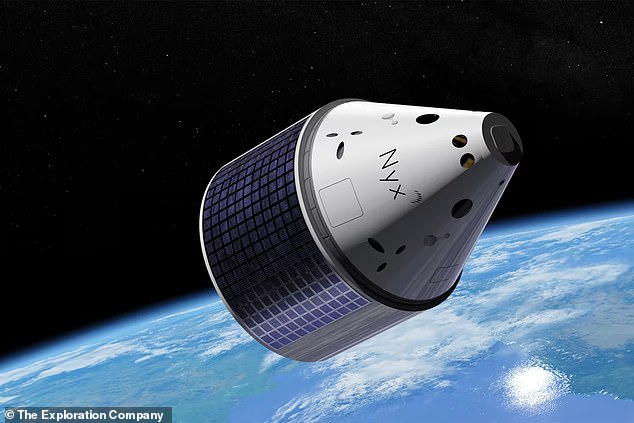A Tragic End to a Space Journey for the Final Rest
A space capsule carrying the ashes of 166 individuals met an unexpected and disappointing end when it crashed into the Pacific Ocean. The Nyx capsule, launched on June 23 as part of an initiative called ‘Mission Possible’ by the German start-up The Exploration Company (TEC), was intended to send its passengers on a final journey into space. The mission aimed to fulfill the wishes of those who wanted to become astronauts in their final moments.
The capsule was designed to return safely to Earth after its flight, ensuring that the remains of the deceased could be brought back as per their requests. However, after completing two orbits around Earth, an anomaly occurred, leading to the loss of the vessel during its planned re-entry into the atmosphere. According to Celestis co-founder and CEO Charles M. Chafer, the capsule was lost before it could splash down and return to the planet.
The mission was carried out in partnership with Celestis, a Texas-based company specializing in space burials. TEC stated that the spacecraft’s launch was successful, the payload was powered as expected in orbit, and the spacecraft even re-established communication after a brief blackout during re-entry. Despite these achievements, the mission faced a setback just before the capsule was scheduled to return to Earth.
TEC revealed that they lost communication with the capsule a few minutes before its scheduled splashdown. In a statement, the company expressed regret to all clients who had entrusted them with their payloads. TEC confirmed that the payload, which included the remains of the deceased and several experimental items, was lost in the Pacific Ocean.
In addition to human remains, the Nyx capsule carried cannabis plant matter and seeds for a citizen science project called Martian Grow. This initiative aimed to study the viability of growing cannabis on Mars, pushing the boundaries of space agriculture. According to Popular Mechanics, the project sought to explore new possibilities for sustainable living in extraterrestrial environments.
Despite the loss, Celestis offered comfort to the families of those whose loved ones were aboard the mission. Chafer wrote that although the flight capsules could not be recovered, families might find some peace in knowing their loved ones were part of a historic journey. He described the mission as one that launched into space, orbited Earth, and now rests in the vastness of the Pacific, akin to a traditional sea scattering.
Celestis acknowledged the significant milestones achieved during the mission, including the launch, orbit, and controlled re-entry. This was the first Celestis mission designed to return from orbit, and the company recognized the bravery and ambition required from all involved. Chafer emphasized that no technical achievement can replace the personal meaning this service holds for families.
TEC, which had only launched one previous capsule before Nyx, acknowledged that while the mission wasn’t a complete success, it still represented progress. Hélène Huby, Founder and CEO of TEC, expressed a mix of gratitude and regret, stating that the team would continue their journey, eager to implement the lessons learned in their next vehicle. She thanked the team members for their solidarity, resilience, and commitment to the mission’s success.
Celestis has been in contact with the families to offer support. Chafer concluded by reaffirming the company’s commitment to serving with transparency, compassion, and care. The loss of the Nyx capsule marks a challenging moment for the space burial industry, but it also highlights the ongoing efforts to push the boundaries of what is possible in space exploration.







